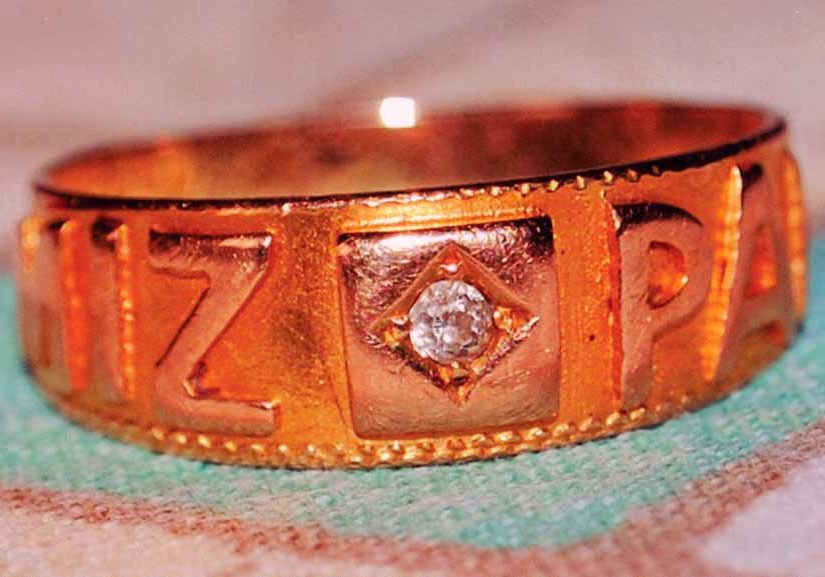
Ask the Antique Expert: A Romantic Ring
by Allan Blackburn
Dear Allan,
Could you please provide my wife and myself with any information about this ring, which belonged to a cousin (deceased) from Stoke-on-Trent, who was a chemist to the potteries. The letters engraved ‘Mizpah’ are believed to be Jewish. The hallmark is faint but may be 18 carat. It is in a small case from Pidduck and Sons, Hanley.
Thank you,
Mr and Mrs Assheton-Smith
In our last issue I talked a lot about gold rings and how people are usually disappointed with their valuations. I hope you saw that article and that’s what prompted you to write in with your ring. That’s what usually happens with this feature. Readers recognise their own treasure from the items featured on the page and it encourages them to write in.
When valuing a piece of jewellery, we first need to look at what it’s made from. I mentioned hallmarks briefly in the last feature but it’s worth talking about them here in relation to the gold that your beautiful ring is made of.
- A Mizpah ring symbolises hope and protection
Jewellery has been a popular accessory for centuries. Fashions have altered, but the raw materials have not. The most frequently used metal nowadays is, as it always has been, Gold.
Practically speaking, gold is very flexible, but it also has a warmth and sheen unrivalled by other metals. Most of the gold jewellery around today is also hallmarked, so buyers can identify and date it easily.
The hallmarking advises the buyer how pure the gold is (pure gold is too soft, so it is typically coated with another metal). This can easily be identified by the number carried, for example 375 is nine carat gold, 585 is 14 carat gold and 750 is 18 carat gold. It is also possible to find older pieces with the number 916, which is 22 carat gold.
Other marks include the maker’s mark, the date mark of assaying and the assay office mark, which will be; a lion for London, a castle for Edinburgh, an anchor for Birmingham and represented now by a white rose for Sheffield (this was changed from a crown in 1977). You are right about the word Mizpah being Jewish. The word Mizpah signifies an emotional bond or connection between two people who are separated or detached from one other, either physically or by death. Jewellery, like your ring, was worn to symbolise this bond and used to wish good fortune and a safe return for those who are apart.
Mizpah also means ‘watchtower’ and rings like yours, a single wide band, were used as a talisman to protect friends during long periods of separation Mizpah is referred to in the Bible in the book of Genesis and it says “May the Lord keep watch over you and me when we are away from each other”. Mizpah is not just consigned to jewellery. You can find the word on headstones in graveyards, and on other memorials.
So, whatever your beliefs, this beautiful ring is a symbol of separation, of being watched over and the hope of a safe reunion.
Jewellery like this has been around for hundreds of years but was incredibly popular during the Victorian era, a period of time well known for romance and desire. Many pieces were made at this time. Some Victorian Mizpah jewellery will have the full meaning inscribed on the inside as well.
Times of strife and war saw a surge in this type of jewellery as it was bought for the men who went to war to wish them a safe return back to their families.
It is steeped in tradition and loved by anyone who is romantic and has a sense of love, nostalgia and (hopefully) happy endings!
I would suggest there is a story behind this ring. It would be amazing if you could find out how your cousin came to have this ring or who had given it to him. Unfortunately, as with so many other antiques, the story of how the item came to be in its owner’s hands often dies with the owner. It’s tragic but often so true. Ask around your other family members and see if this ring was part of a great love story!
For insurance purposes I would value it at £150 to £200 as it is very pretty and the small diamond will enhance its value, but I’m sure the sentimental value of this particular piece is worth so much more.






